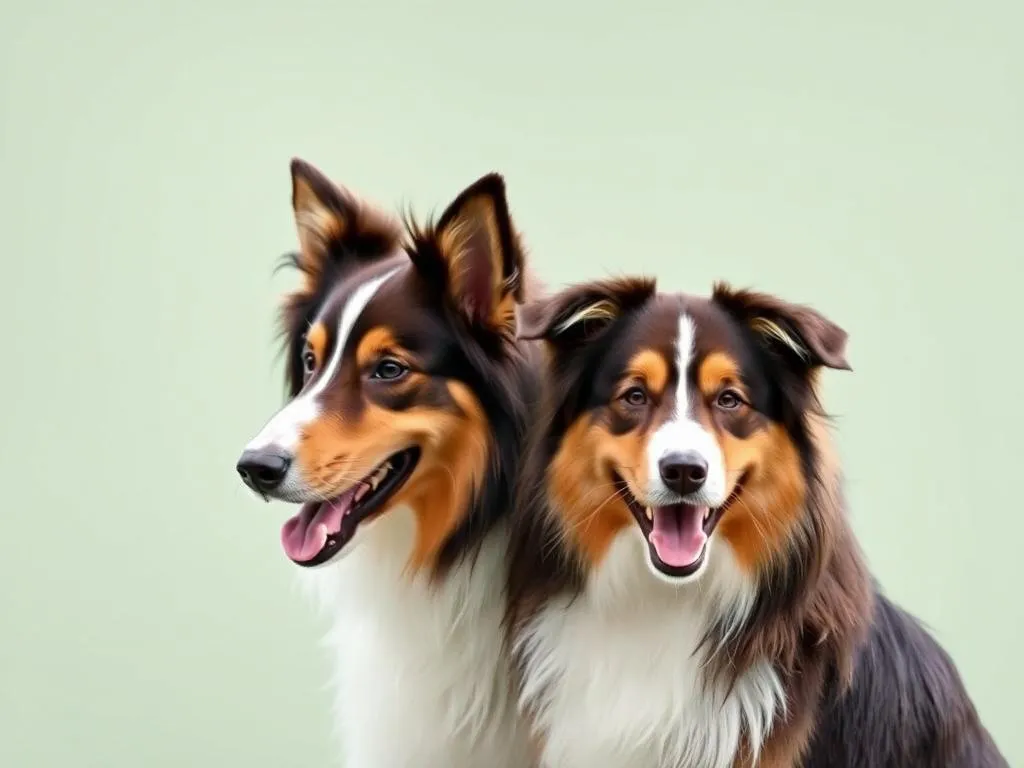
When it comes to choosing a dog, the options can be overwhelming. Two popular breeds among dog lovers are the Shetland Sheepdog and the Australian Shepherd. Both breeds are renowned for their intelligence, loyalty, and herding backgrounds. However, they possess unique characteristics that can make one more suitable than the other for potential dog owners. Let’s dive into the specifics of these two breeds, examining their histories, physical traits, temperaments, and more.
Overview of Shetland Sheepdog
History and Origin
The Shetland Sheepdog, often affectionately called the “Sheltie,” has its roots in the Shetland Islands of Scotland. Originally bred as a herding dog, the Sheltie was used to manage small livestock, such as sheep and ponies. The breed’s development involved crossing the small Collies that were brought to the islands with other local breeds, resulting in a dog that was adept at herding and had a gentle temperament.
Physical Characteristics
Shelties are small to medium-sized dogs, typically weighing between 20 to 40 pounds. They stand about 13 to 16 inches tall at the shoulder. One of their most striking features is their double coat, which consists of a soft undercoat and a longer, harsher outer coat. Coat colors can range from sable and white to black and blue merle, often with distinctive white markings.
Temperament and Behavior
Known for their gentle and affectionate nature, Shetland Sheepdogs are incredibly loyal to their families. They are intelligent and eager to please, making them relatively easy to train. Shelties are playful and energetic, thriving on interaction with humans and other pets. They are particularly good with children and often form close bonds with their family members.
Health and Lifespan
The average lifespan of a Shetland Sheepdog is around 12 to 14 years, but they can be prone to certain health issues such as hip dysplasia, eye problems, and certain skin conditions. Regular veterinary check-ups and a healthy diet are crucial in managing their health and longevity.
Training and Intelligence
Shelties are highly trainable due to their intelligence and eagerness to learn. Positive reinforcement techniques work best, as they respond well to praise and rewards. Common behavioral traits include being alert and sensitive, which makes them excellent watchdogs.
Overview of Australian Shepherd
History and Origin
Despite its name, the Australian Shepherd was developed in the United States in the 19th century. The breed was primarily used by shepherds who herded sheep in the western U.S. The Australian Shepherd was influenced by various herding breeds, including the Collie, which contributed to its versatile herding abilities and distinct appearance.
Physical Characteristics
Australian Shepherds are medium-sized dogs, weighing between 40 to 65 pounds and standing about 18 to 23 inches tall at the shoulder. Their coat is medium-length and can be straight or wavy, coming in a variety of colors, including blue merle, red merle, black, and red, often with white and tan markings.
Temperament and Behavior
Australian Shepherds are known for their energetic and enthusiastic nature. They are intelligent, friendly, and easily trainable, making them perfect companions for active families. These dogs thrive on mental and physical stimulation, which makes them excellent for dog sports and other activities. They are also good with children and can be protective of their families.
Health and Lifespan
The average lifespan of an Australian Shepherd is about 12 to 15 years. However, they may be predisposed to certain health conditions like hip dysplasia, epilepsy, and eye disorders. Regular veterinary care and a balanced diet are critical to maintaining their health.
Training and Intelligence
Australian Shepherds are exceptionally trainable, ranking among the top dog breeds for intelligence. They excel in obedience and agility training. Consistent training, combined with socialization, is essential to prevent behavioral issues, as they can become bored or destructive without enough mental stimulation.
Comparative Analysis: Shetland Sheepdog vs Australian Shepherd
Size and Appearance
When comparing size and physical traits, the Shetland Sheepdog is generally smaller than the Australian Shepherd. Shelties typically weigh 20 to 40 pounds, while Aussies range from 40 to 65 pounds. In terms of grooming needs, both breeds have double coats that shed seasonally, but Shelties require more frequent grooming due to their thicker fur.
Temperament Comparison
Both breeds share similarities in personality traits, such as loyalty and intelligence. However, the Australian Shepherd tends to be more energetic and requires more vigorous exercise than the Sheltie. On the other hand, Shelties may be more reserved with strangers but are typically gentle and affectionate with their families.
Energy and Exercise Needs
In terms of activity levels, the Australian Shepherd is more demanding, needing at least an hour of vigorous exercise daily. They thrive in environments where they can run freely and engage in various activities. Shetland Sheepdogs, while still active, do well with moderate exercise, such as daily walks and playtime.
Training and Socialization
Both breeds are trainable, but the Australian Shepherd may require more consistent training due to their high energy and strong instincts. Early socialization is important for both breeds to ensure they develop well-rounded temperaments. Positive reinforcement is effective for both, but Shelties may respond better to gentler training methods.
Health Considerations
Health issues can affect both breeds, but the specific conditions may differ. The Shetland Sheepdog is prone to eye problems and certain skin conditions, while the Australian Shepherd may face issues like hip dysplasia and epilepsy. Preventative care, including regular vet visits and a healthy diet, is essential for both breeds.
Choosing the Right Breed for You
Lifestyle Considerations
When assessing which breed may be a better fit, consider your living situation and lifestyle. If you have a more active lifestyle and can dedicate ample time to exercise and training, the Australian Shepherd may be a suitable choice. Conversely, if you prefer a smaller dog with moderate exercise needs, the Shetland Sheepdog could be ideal.
Grooming and Maintenance
Both breeds require regular grooming, but the Shetland Sheepdog may need more frequent brushing due to its thicker coat. Owners should factor in grooming costs and time when deciding on a breed. Both breeds are generally low-maintenance regarding health care if regular check-ups are maintained.
Cost of Ownership
Initial costs for both breeds can vary based on whether you adopt or purchase from a breeder. Ongoing costs include food, grooming, and veterinary care. Budgeting for emergencies is also important, as unexpected health issues can arise.
Expert Opinions and Testimonials
Dog Trainer Insights
A professional dog trainer notes, “Both the Shetland Sheepdog and Australian Shepherd are intelligent breeds that thrive on engagement with their families. The key difference lies in their energy levels; while Shelties can be satisfied with moderate activity, Aussies need more vigorous exercise to stay happy and healthy.”
Owner Testimonials
Owners of Shetland Sheepdogs often highlight their affectionate nature and suitability for families. In contrast, Australian Shepherd owners rave about their dog’s energy and versatility, making them excellent companions for active lifestyles. However, some owners of both breeds mention the commitment required for training and exercise, noting that both breeds thrive on mental stimulation.
Conclusion
In summary, both the Shetland Sheepdog and Australian Shepherd are exceptional breeds with distinct characteristics. The Sheltie is affectionate, smaller, and requires moderate exercise, while the Australian Shepherd is energetic, larger, and needs more vigorous activity. Ultimately, choosing between these two breeds will depend on your lifestyle, family dynamics, and personal preferences.
Before making a final decision, it’s essential to conduct further research and consult with professionals to ensure that your chosen breed aligns with your life and expectations.









